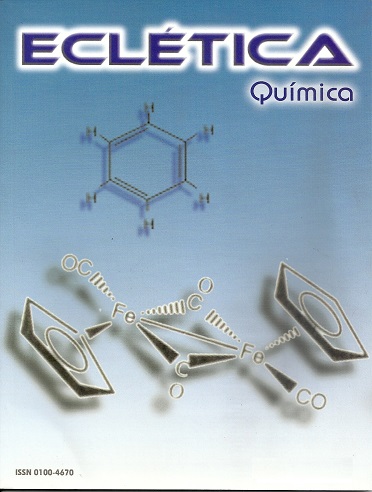Abstract
Nitroaromatic compounds appear as important agents in environmental contamination, with the highlight, its high resistance to microbial degradation. The reductive processes using metallic iron have been studied by several researchers with the purpose of formation of substrates that are less recalcitrant compounds. In this study the flue dust electric iron rich residue was thermally reduced under flowing hydrogen gas to obtain a composite phase reduced iron. This composite was used as reducing agent in transformation reaction of nitrobenzene to aniline. The results show that heat treatment of the residue promoted the formation of phases of reduced iron as FeO and Fe This material has high efficiency in reduction reaction of nitrobenzene to aniline, where the concentration of this contaminant was reduced ca. 86%.

This work is licensed under a Creative Commons Attribution 4.0 International License.
Copyright (c) 2017 Eclética Química Journal




